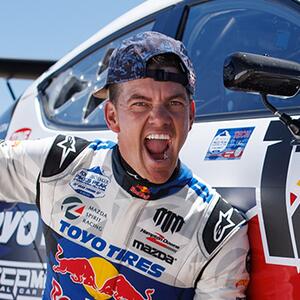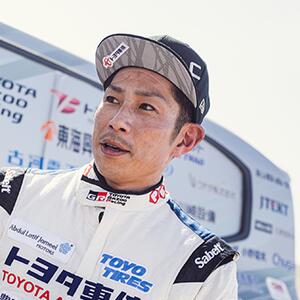The Proxes R888R has a semi race construction (very stiff) and a race tread compound. The optimum tread temperature range is between 71C and 105C measured using a probe type pyrometer, and ideally a maximum difference across the tread of 15C. The maximum hot pressure we recommend is 40psi. Camber angles up to 5 degrees negative (normaly between 1 – 3) are permissible but the final setting will depend on tread temperatures. It is advisable to have as much positive castor as practical as castor induces a beneficial camber change during cornering. It is recommend that the tyres be put through a heat cycle before hard use, this will scrub them in and remove any mold release agent.
The pressures you use will initially depend on the weight of the car, too little pressure on a heavy car can lead to over deflection of the tyre and subsequent failure.
Below are some basic settings:
|
VEHICLE WEIGHT
|
COLD PRESSURE
|
HOT PRESSURE
|
|
Very Light < 800kg
|
17 - 22 psi
|
22 - 29 psi
|
|
Light 800kg - 1000kg
|
20 - 26 psi
|
24 - 32 psi
|
|
Heavy 1000kg - 1400kg
|
23 - 27 psi
|
28 - 40 psi
|
|
Very Heavy > 1400kg
|
27 - 35 psi
|
37 - 40 psi
|
As a tyre gets hotter the pressure increases, this is due to the moisture in the air. The cold pressure you set to achieve a desired hot pressure will depend on the conditions on the day i.e. ambient and track temperature, wet or dry. If the day/track is cold you will need to start with a higher cold pressure as the tyre will not get as hot therefore the pressure increase will not be so great.
Hot pressures must be balanced side to side. Once the tyres have cooled you will find that you will have a difference in pressure side to side, if you have been racing on a right hand track you will find the offside pressures will usually be higher than the nearside.
Changing hot inflation pressures by small amounts can be used to fine tune handling.
|
Reduce Oversteer
|
Reduce rear pressures or increase front pressures
|
|
Increase Oversteer
|
Increase rear pressures or reduce front pressures
|
|
Reduce Understeer
|
Reduce front pressures or increase rear pressures
|
|
Increase Understeer
|
Increase front pressures or reduce rear pressures
|
Achieving the required tread temperatures will depend again on the conditions on the day i.e. ambient and track temperature, wet or dry.
You often here competitors saying “My tyres started to go of towards the end of the race”, this is usually due to the tread getting to hot.
The tread temperatures are constantly changing through out a race, hotter when cornering and cooler when on the straights and cooling even more when you are slowing to come into the pits. Therefore the temps you record in the pits will be lower than those during the race. So if you record temperatures within the range given above the probability is the temps will be too high during the race.
Increasing your tyre pressures will cause your tread temperatures to increase, more pressure stiffens the tyre’s casing which results in the tread having to do more work resulting in the tread getting hotter. Lowering your pressures will cause them to decrease.
Inevitably changing one thing will affect other things, the whole set up of your car is a compromise between anything that is adjustable.
If you would like to discuss further please contact Alan Meaker our Technical and Motorsport Director.
01933414537
07879 813915








